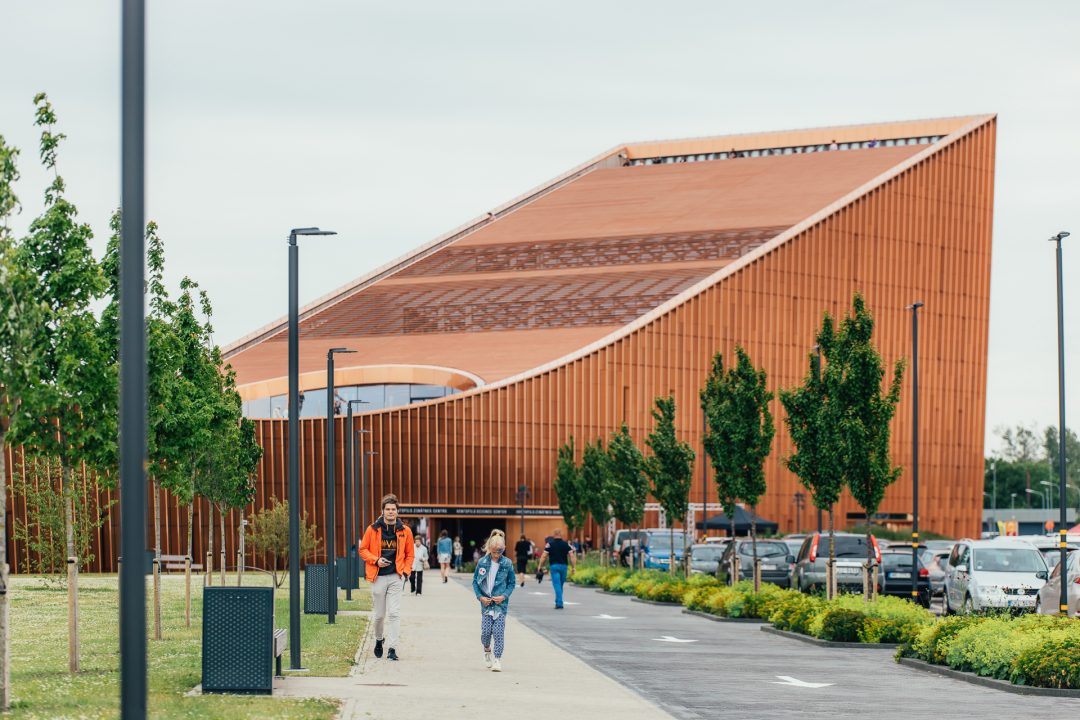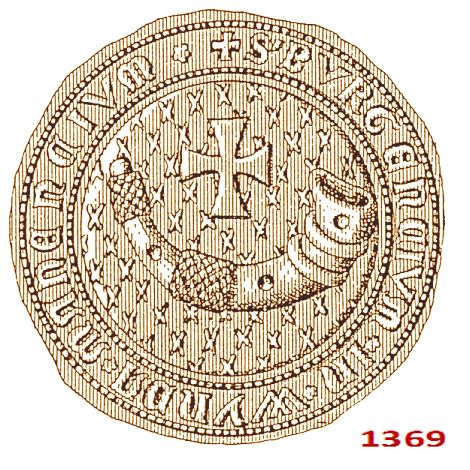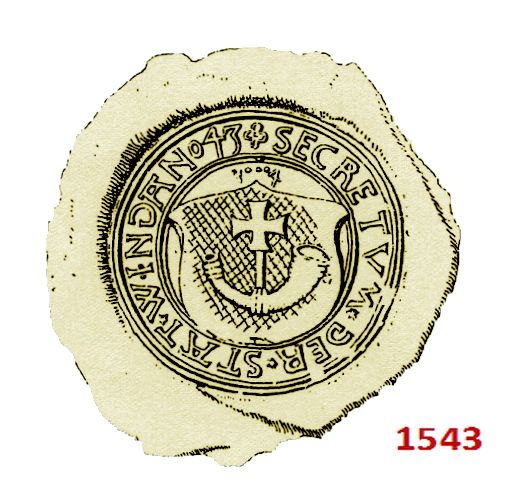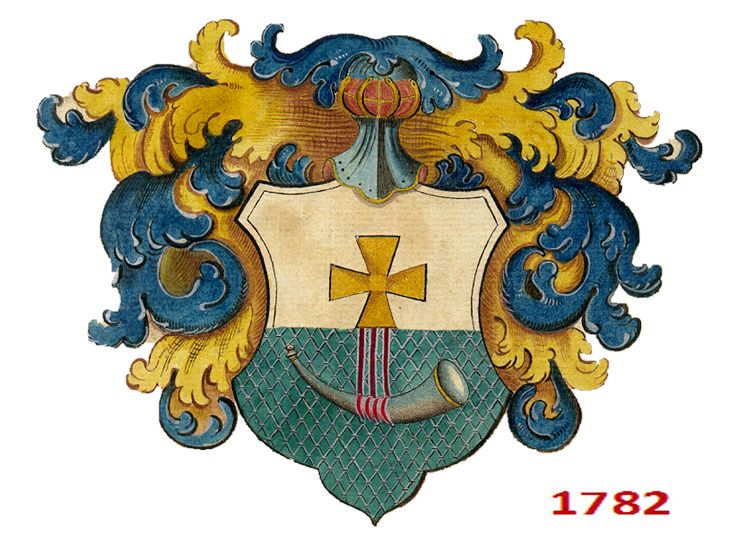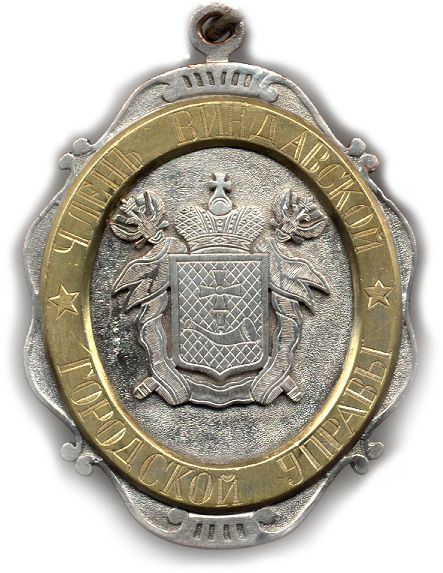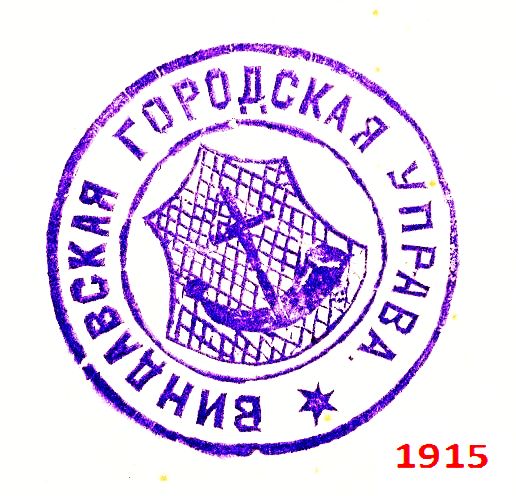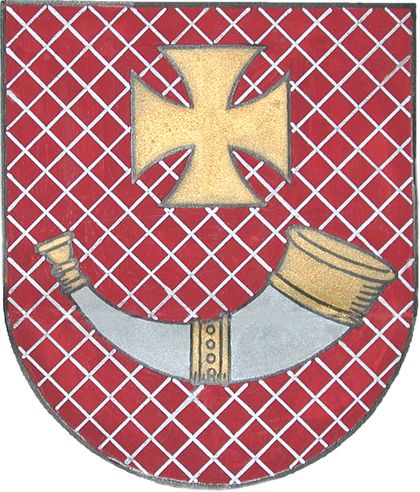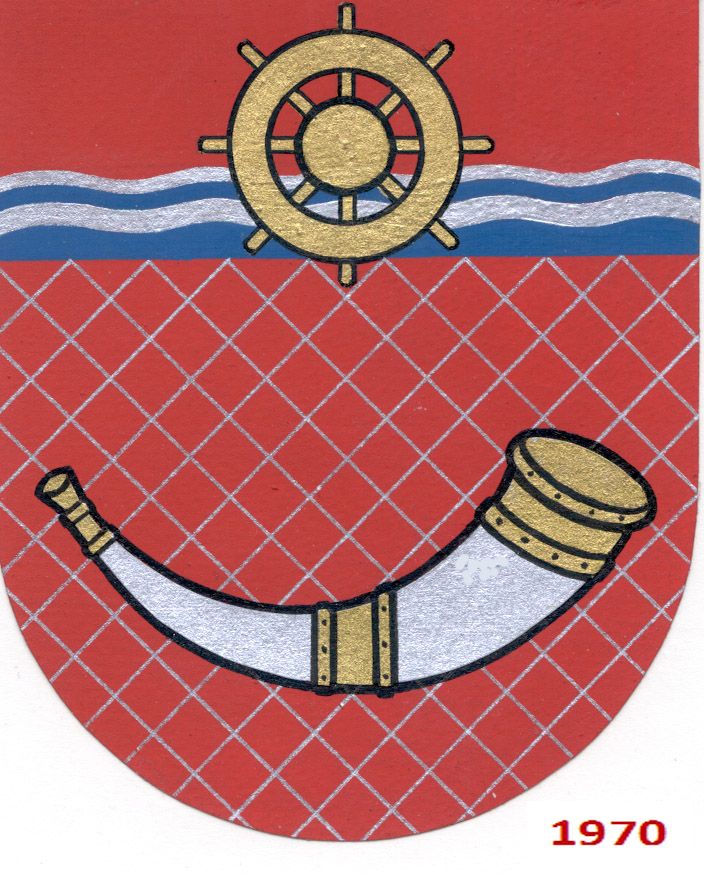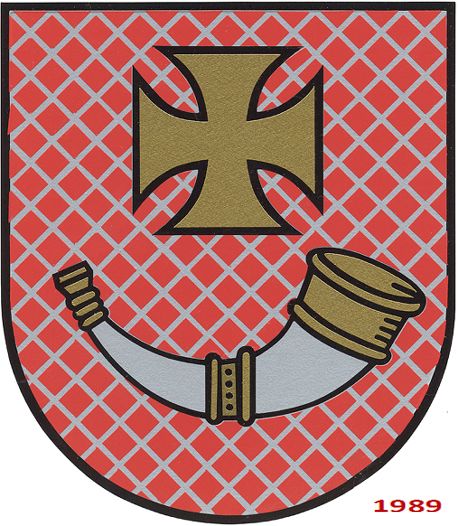Each country and city have their own symbols – a flag, anthem, and a coat of arms, and Ventspils is no exception, as it has its own symbols of difference and belonging. The flag and anthem of Ventspils are symbols that were created during the National Awakening and restored independence of Latvia. However, the elements depicted on the coat of arms were found on a wax seal of 1369, which makes the coat of arms of Ventspils one of the oldest heraldic symbols in Latvia
As for the term ‘coat of arms’ (‘ģerbonis’), it came later from the Russian term ‘герб’, which, in turn, is derived from the Polish term ‘herb’ and German term ‘Erbe’ (heritage). Thus, the name of the symbol already implies that it has been passed from generation to generation like a genetic code.
The coat of arms of Ventspils has a field covered with a net pattern, scientifically called ‘diapering’ (it resembles the pattern of the Damascene sword). Worth mentioning is the fact that the history of the coat of arms is related to weapons, crusades, and tournaments. The use of the net pattern, of course, is related to fishery. The coat of arms shows a cross pattée (also called ‘Templar cross’) in its upper section that was used by German crusaders as a symbol of victory in Ventspils, which was a harbour of the Livonian Order. Under the cross pattée, there is a hunting horn. What could that mean? Only that there were lots of woods in Ventspils and thus good hunting areas.
The heraldic symbols – the hunting horn and the cross of the Livonian Order – were preserved even in the following centuries, as Ventspils formed part of the Duchy of Courland and Semigallia and the Governorate of Courland. True, the colours and shapes of the shield have been modified from time to time, depending on the heraldic and artistic taste and changes in the political and ideological conditions.
However, the coat of arms underwent major changes in the 20th century, facing particular complexities in terms of the understanding and use of symbols.
In newly established Latvia, symbols became relevant in the early 20th century after adoption of the Law on the Flag and Coat of Arms of the Republic of Latvia. In 1923, the Committee on Heraldry was established. Back then, only 19 out of 36 cities had legally approved coats of arms. However, according to the Committee, not all of them were compatible with the idea of an independent country. So, for instance, the coats of arms of the cities in Latgale Region resembled the coat of arms of Polotsk, depicting a double-headed eagle at the top of the shield. The symbols depicted on the coat of arms of Ventspils, however, refer to another epoch, more specifically, the time as the territory of Latvia formed part of Livonia. At those times, the development of national self-awareness was closely related to the rejection of everything that is German, and many elements depicted on the historical coat of arms were considered German symbols that stand for “centuries of subjugation” of Latvian nation, thus not meeting the requirements for symbols of the newly established country. It should be noted that local governments also sought to remove non-Latvian elements from their coats of arms. The cross met with the hardest rejection. Ventspils City Council was among those who requested the replacement of the cross with another symbol, such as the fire cross of ‘Lāčplēsis’ (‘Bear Slayer’) or a lighthouse with a light beam. It is interesting to note that Riga and Valmiera had a similar idea of the replacement of the German cross. The historical symbols of Ventspils were, however, preserved at the last moment, shortly before submitting them to the State President for approval, deleting the entry ‘fire cross’ from the minutes. On 31 October 1925, the coat of arms of Ventspils City was officially approved by the then State President of the Republic of Latvia – Jānis Čakste.
After the occupation of Latvia in 1940, the use of the coat of arms was neither cancelled nor prohibited. It was simply not used. In the late 1960s’, the need for symbols arose. Just like in the early 20th century, there were strong objections towards the cross pattée, which was finally replaced with a symbolically neutral ship’s wheel. Worth mentioning is the fact that elements and colours of the flag of the Latvian SSR were very typical for the coats of arms of that time.
Symbols became much more relevant during the National Awakening, demonstrating the urge of Latvian nation to regain the independence. On 29 March 1989, the historic coat of arms of Ventspils, previously approved in 1925, was restored.
2011. On 28 July 2011, the Ministry of Culture of the Republic of Latvia included the coat of arms of Ventspils City in the Register of Coat of Arms.
The creation of the city flag is also linked to the history of the coat of arms. The need to create a city flag emerged after the restoration of the coat of arms on 29 March 1989, as the coat of arms recovered its shape from 1925 by the decision of the Council of the People’s Deputies.
History of the coat of arms of Ventspils
The city has both its own written and spoken name and the “name” conveyed through specific colours and symbols, i.e., the coat of arms. The former may, to a certain extent, change over time. The latter, on the other hand, remains unchanged, and only rarely, under extremely unfavourable conditions, gets distorted or even lost. One example is the history of the “visual name” of Windau/ Виндава/Ventspils, namely, the coat of arms.
Ventspils is one of the few Medieval cities within the territory of Latvia, the heraldic symbols of which date back to 14th century. One of the eleven settlements, which during the reign of the Livonian Order (13th–16th century) had earned the town privileges, could simply not do without a symbol of civic self-awareness, as it was unacceptable in the public opinion of that time. The oldest symbol that most certainly much later became the coat of arms of the city is found on a round wax seal placed on documents of 1369. It shows a cross with outwardly widening ends (the so-called ‘cross pattée’) on a ckeckered background with a hunting horn beneath and an inscription: “Seal for citizens of the city of Venta” (S[igillium] burgencium in Winda manencium).Although this representation cannot yet be considered a coat of arms in the full sense of the word (the depicted elements are not surrounded by a shield), it does, without doubt, mark the beginnings of the heraldic symbol of Ventspils City, as both the cross and the hunting horn as main elements have been preserved, later to be depicted on the shield. Their detailed representation or stylisation is irrelevant, as the artists and reproducers of the coat of arms have modified the design over time at their own discretion. That was until the 20th century, when the society started getting used to accurate serial reproductions and sought to transfer them also to the coat of arms.
Not all symbols depicted on the coat of arms are easy to explain. It is easier with the cross – it symbolises a settlement as a city of the Livonian Order, like it is the case with cross pattée depicted on the coat of arms of Valmiera and also Riga. As for the hunting horn, there are several explanations. According to one of the versions, a hunting horn is a popular symbol used on the coat of arms of many Western European cities and families. Thus, it has found its way to the coat of arms of Ventspils. The Baltic-German historian C. Mettig believed that, in case of Ventspils, the use of a hunting horn could be associated with a mere practical thing – hunting, given that one of the closest assistants of the Komtur was a special falconer who caught, tamed, and trained falcons for hunting.
Seems that the colours and metals of the coat of arms are the only elements that have been modified. It follows from the Book of Deeds of 1728 of the Ventspils Council that the shield shows “a golden cross pattée on white background in the upper section (…) and a black hunting horn with golden mouthpiece and rim on a dark blue background with net pattern below (…)”. According to its description given in the early 19th century, the entire background of the shield was black, while the horn and cross were silver. The combination of colours and metals, as it is used currently, was established only in 1846. True, all those descriptions mention a “fishing net”, usually depicted in the lower part of the shield, as well as a hunting horn suspended by links on a cross. The coat of arms of Ventspils was represented this way by 1925, until R. Zariņš or one of his students (the question about the authorship remains unresolved) developed the design of the coat of arms, as it is used today: “Silver hunting horn with golden mouthpiece, hoop, and rim on purple background covered with silver net pattern”. It is true that, in the first years of the existence of the Republic of Latvia, influenced by patriotic mindset and rejection of the old “German” heritage, the City Council asked the Committee on Heraldry to change some elements, “replacing the German iron cross with the Latvian fire cross of ‘Lāčplēsis’ (‘Bear Slayer’) or a lighthouse with a light beam”. It should be noted that, at that time, the local governments of Riga and Valmiera had a similar intention to remove the cross pattée. However, when approving the descriptions and designs of the old, historic coats of arms, the Committee on Heraldry decided to preserve the historical elements.
During the Soviet era, the symbol of Ventspils City, like the coats of arms of other Latvian cities, was “banned”, if not “forgotten”, for a long time. Only in the late 1960s’, the coat of arms of Ventspils was created alongside the Soviet heraldic symbols of cities. The collection of Ventspils Museum includes around 40 different sketches offering a wide range of design solutions – from seagulls, anchors, and ships to the sculpture of J. Fabriciuss and large five-pointed stars. After long vicissitudes, a symbol combining both the old and Soviet symbols was approved in 1970, namely, a hunting horn at the upper section of the shield with a ship’s wheel in the lower part. The cross as a symbol of unacceptable ideology was, of course, removed. The coat of arms was designed in the colours of the flag of Latvian SSR.
Ventspils recovered its historical symbols in March 1989. The symbol approved in 1925 was reborn through a drawing by the artist A. Norītis. . In 1993, it was once again restored by the State Committee on Heraldry alongside the coats of arms of other cities (authors of the drawing: J. Ivanovs, G. Kirke, L. Šēnbergs). The description, which plays the key role in heraldry, was analogous. Drawings were distinguished by minor details that were imperceptible at first glance. The version of the drawing by A. Norītis is used nowadays. Let us hope that this historical symbol of the city will exist (and will be used) for many hundreds of years to come. (Dr. Hist. Armands Vijups).

